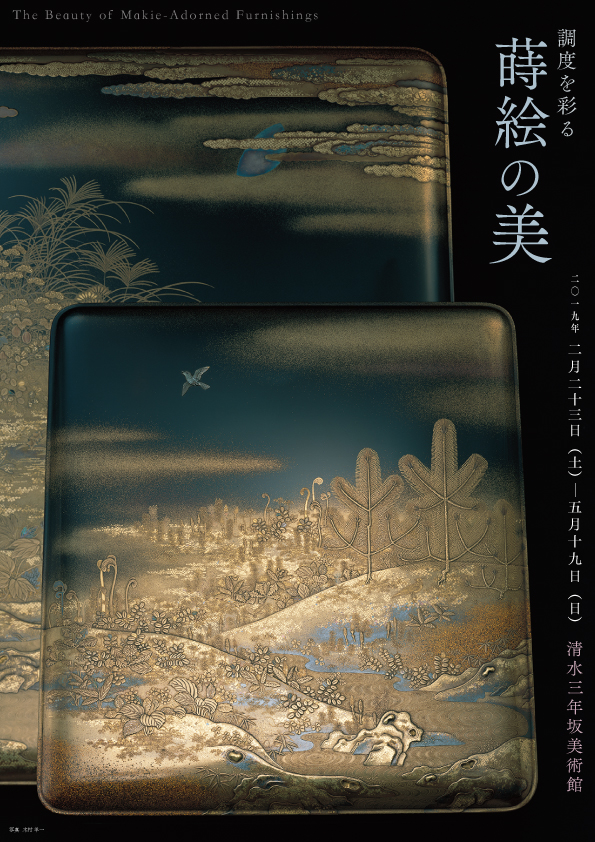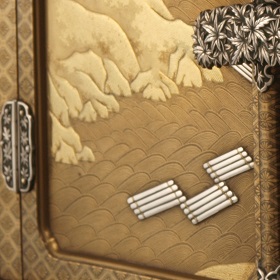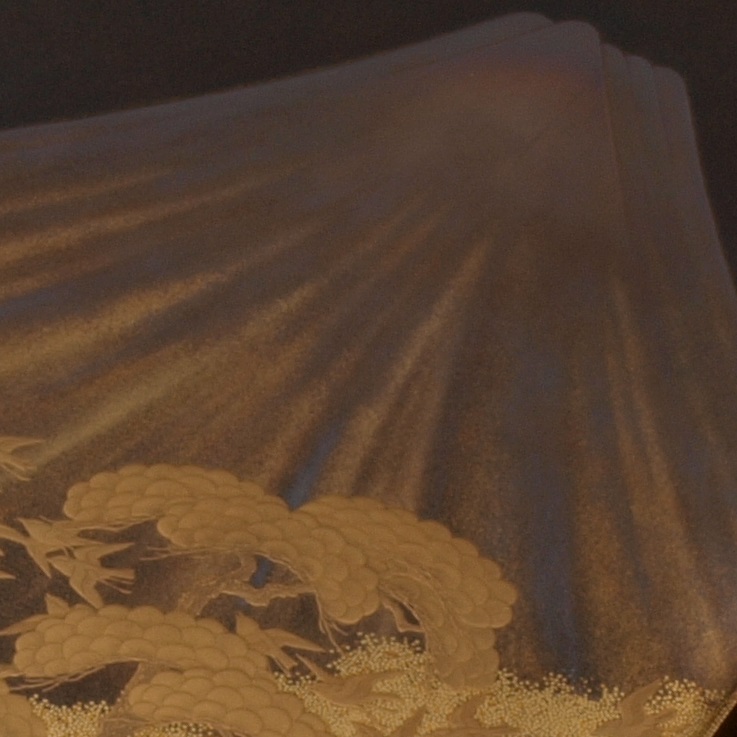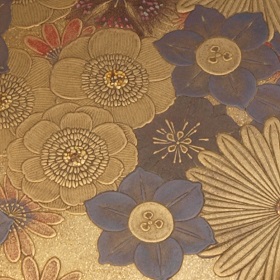
The Beauty of Maki-e-Adorned Furnishings
Lacquer artworks are made using sap collected from the lacquer tree, but maki-e is one among the various lacquer artistic techniques that uniquely developed in Japan. With maki-e, a pattern is first drawn in lacquer and then sprinkled with gold powder before it dries so that powder will adhere to the surface.
In ancient times, maki-e was already being used on sutra boxes and tools for ritual dedications at shrines and temples. Later it was often used to ornament living space furnishings such as drawing room decorations in the Muromachi era (1336~1573) as well as the tools and implements of the high and mighty in the Momoyama era (1573~1603).
Patronization by the Edo period shogunate family and feudal lords and demand on the part of the merchant class spurred the development of ever-increasing superiority in maki-e artisans’ skill and design. At the loss of these patrons with the advent of the Meiji period, these artisans found new avenues for their work, producing furnishings for the imperial and zaibatsu families as well as small boxes and incense containers for export to Europe.
This exhibit centers on works created from the end of the Edo period through Meiji. It includes calligraphic inkstone cases, which were often produced in sets together with a bundai (a small, low desk) and writing paper box, and lovely small boxes and incense cases, in addition to larger pieces such as bundai, writing paper boxes, and book cases.
We hope that you enjoy those elegant maki-e furnishings that graced Japanese living spaces and daily lives and captured the hearts of many abroad.
 2025-12-07 / 2019-02-23
2025-12-07 / 2019-02-23 

